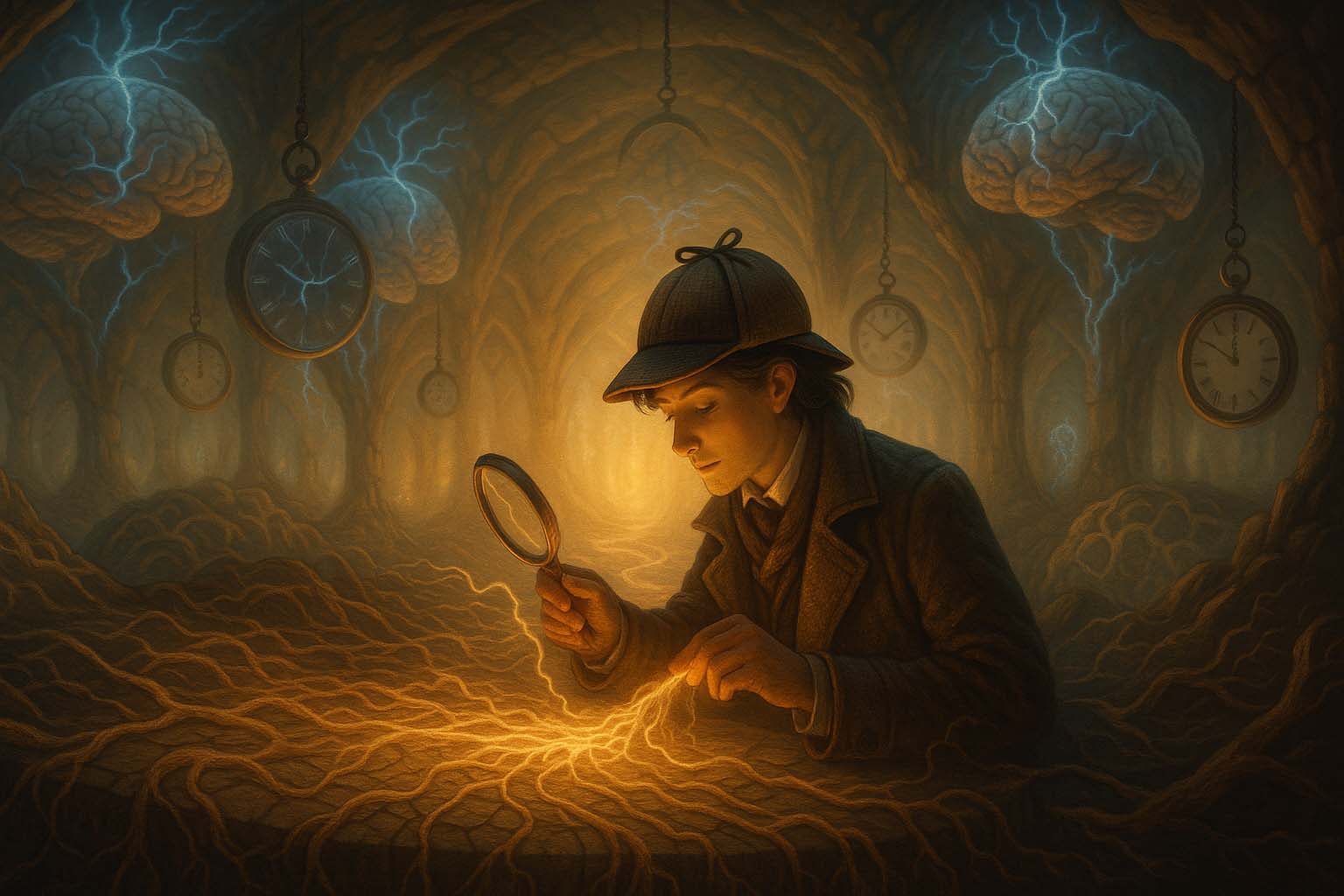
Neurosurgery
- Posted by admin
- Categories Core Surgical Specialties
- Date May 24, 2025
- Comments 0 comment
The Brain-and-Spine Detective’s Domain – Cracking the Cases of Pressure, Precision, and the Edge of Consciousness
1. Introduction: The Scene of the Specialty
Step into the shoes of a Neurosurgery sleuth.
This is the final frontier—the seat of thought, identity, movement, and sensation. Neurosurgeons navigate the delicate terrain of brain and spine with blades finer than breath, knowing that one wrong cut could steal speech, memory, or mobility. Their investigations begin where other specialties hesitate: tumours nestled deep, bleeds behind bone, nerves trapped in corridors of pain. Welcome to a world where millimetres matter, and your hands may alter the very self of the patient beneath them.
2. Key Mysteries They Solve (Common Conditions)
These detectives specialise in solving cases involving:
- Brain Tumours – resecting growths from eloquent cortex and deep recesses.
- Spinal Disc Herniation & Cord Compression – restoring strength, sensation, and structure.
- Traumatic Brain Injury & Haematomas – decompression at the brink of brainstem herniation.
- Hydrocephalus & Intracranial Pressure Disorders – rerouting CSF to preserve life and function.
Each case requires a map of mind and matter—navigating anatomy and agency at once.
3. Their Trusted Tools & Techniques
Every detective has their kit—and in Neurosurgery, tools may include:
- Microsurgical Instruments & High-Powered Scopes – precision under magnification.
- Neuronavigation Systems – real-time GPS through brain tissue.
- Craniotomy & Laminectomy Techniques – elegant entry and closure of the cranial vault and spinal canal.
- Stereotactic and Robotic Assistance – when even the steadiest hands need an extra edge.
This is craftsmanship at the cellular scale—where a tremor is too much, and stillness is everything.
4. The Charms of This Field: Why It Captivates the Curious
- Extraordinary Anatomy: The human brain is the most complex object in the known universe.
- High-Stakes Decisions: Outcomes can be life-altering—or life-defining.
- Technical Mastery: Neurosurgeons are the virtuosos of surgical detail.
- Interdisciplinary Collaboration: Work alongside neurologists, intensivists, oncologists, and radiologists.
This is surgery as art and philosophy—a conversation between scalpel and soul.
5. Challenges: The Toughest Cases They Face
- Intense Pressure – The margin for error is razor-thin.
- Emotionally Charged Outcomes – Even perfect surgeries can yield tragic results.
- Relentless Complexity – No two brains, injuries, or recoveries are the same.
- Demanding Lifestyle – Long hours, critical decisions, and psychological toll.
But the experienced neurosurgeon knows: every risk is taken with reverence, not bravado.
6. Famous Cases and Hallmark Clues
- The “Classic Presentation” – Sudden collapse with a blown pupil: epidural haematoma needing urgent craniotomy.
- The “Zebra” – Unsteady gait and urinary incontinence in an elderly patient: normal pressure hydrocephalus.
- The “Aha Moment” – A subtle hand tremor revealing a deep-seated meningioma near the motor cortex.
7. Your Training Trail: How to Join the Investigation
To become a Neurosurgery detective:
- Begin with exceptional grounding in anatomy, physiology, and critical care.
- Build stamina—physical, mental, and emotional—for the long cases and longer recoveries.
- Train your hands and your judgment equally—technique without wisdom is dangerous.
- Embrace lifelong learning: new tech, new pathways, and new philosophical depth.
Whether you’re relieving spinal cord pressure or excising a tumour from the speech centre, you walk the line between function and fragility.
8. Final Words: The Signature of the Neurosurgery Detective
Neurosurgery detectives are entrusted with the architecture of thought itself.
They touch the tissue of memory, emotion, and movement—not to claim it, but to restore it.
They carry sharp tools and soft hearts, and know that the most delicate surgeries often require the most unshakeable resolve.
So if you are drawn to the edge of complexity, to the weight of decision, and the honour of high-stakes healing—
then this is your operating theatre of truth and precision.



